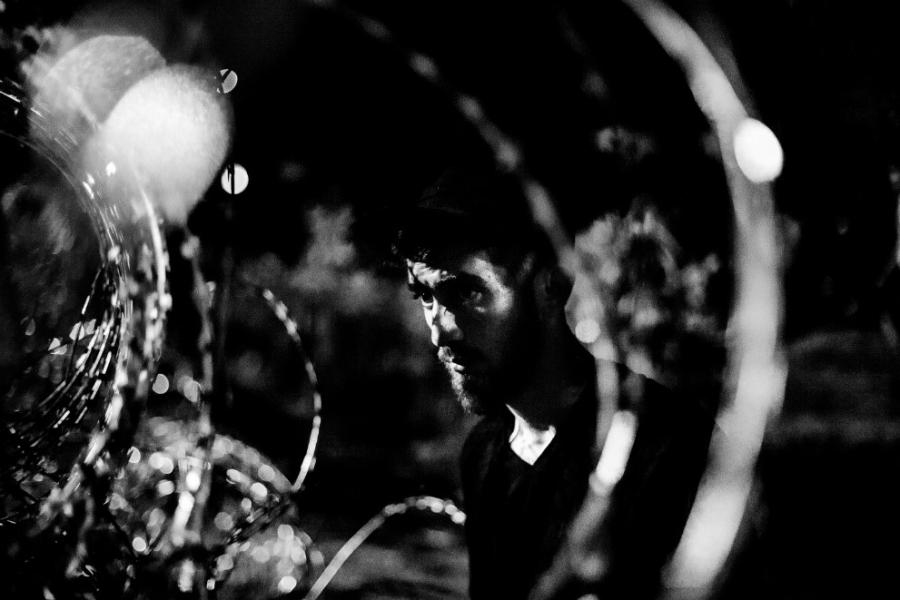
Are the photos of Manu Brabo art?
Photography between art and propaganda
Manu Brabo creates beauty from dire and dismal situations. Does this constitute art, or propaganda?
Photography allows viewers to see what they otherwise cannot see. On the one hand photographs are used as a practical utensil, to transmit a certain reality, but on the other, they are considered art. The award-winning photographer Manu Brabo published some of his photographs depicting refugees, in Al jazeera, which show the blurring boundaries between art and reality and the importance of the photographer's decisions.
Manu Brabo is a Spanish freelance photojournalist whose work mainly focuses on social conflicts around the world.
The technology of photography
Since the early beginnings of photography, discussions on the nature of photography versus that of art emerged, and with them emerged the question about the aesthetic of photography. The German philosopher Walter Benjamin was one of the people who clearly distinguished art and photography from each other. For him, art carries a certain aura which features aloofness, authenticity and uniqueness. Photography and, in particular, the fact that it can be reproduced, destroys Benjamin's idea of aura. However, photography was also the tool that made it possible to portray nature in its exact form and show people what they were not able to see with their own eyes. Through photography, the perception of and thinking about our world has changed.
One photo says more than a thousand words.
Over time, technological advancements have opened up new horizons for photographers. However, at the same time, these developments gave way to deception and falsification. Soon the trustworthiness of photos was doubted. Photography was not seen as an instrument that captured an exact moment in time anymore, but it became a utensil for propaganda and mass media. The myth of freezing a precise moment was marred and the feeling of “only one's own eyes can be trusted” returned. Nevertheless, the photographer experienced more freedom. Artistic design and liberty that artists had known before the era of photography returned. It was possible to portray the 'truth', which was true to the author and not prefabricated by nature. Keeping this in mind, let´s have a look at some photos of refugees, published by the Arab newspaper Al Jazeera.
Photography and truth
Art, it is told, is about truth and about reality. This clear distinction is difficult to apply. Al jazeera´s photos, like the one below, clearly are snapshots of a moment in time and therefore one could claim that they show reality in its purest and most accurate form. However, composition, design, style, perspective and the subject the photographer chooses to depict are also key elements in what is eventually shown.
A photo is not only about what can be seen, but also about what cannot be seen. Thus, we have to consider the person who takes the photo and edits it: Manu Brabo. He is the one who chooses the image, the one who decides about the “what” and “how”. The photographer frames the reality of the photograph and separates it from the rest. The whole structure of the image can be traced back to the photographer and becomes a reality of its own, with a subjective focus.
Another aspect that needs to be considered, which is part of the image, are all the things that are omitted: the left-outs. Basically asking the question: what is in the photo that we cannot see? Clearly, the intervention by the photographer parts the image from reality. This intervention makes the photos unique, authentic and aloof. If we ourselves would look at the scene with our own eyes, it would appear differently. It would be in another perspective, in colour and with less sharp contrast, for example. The following three things, out of many possibilities and liberties, were changed by the photographer: in short, he added something. His additions give the photo a certain aura and meaning. The next question can be asked: is this aura similar to Benjamin's aura and therefore, is it art?. Due to his decisions, reality is modified. His starting point was the reality which he froze and edited in a certain way. A subjective meaning was added which leads to a possible truth.
These photos express beauty and dismay at the same time.

A man at a fence
This photo shows a man behind a fence, who is looking towards the other side. Half of his face is covered in shade. His glance is straight and trenchant. He gazes in abstraction. The perspective is almost of the same height as the man himself, but it's from a distance. The question arises if the photographer was on the other side of the fence. To get this perspective, he could have been on the other side or the fence was not yet finished. The question arises what the man in the picture is looking at. What is in front of him? The amount of light on his face shows that there is light on the other side of the fence. Behind him is darkness. Light and shadow emphasise this contrast. The lights and darks of the photo can be an indication of his desire (which is in front of him) and his abomination (which is behind him). Light and dark might also indicate cultural differences and segregation. On the one side abundance and on the other misery. These photos express beauty and dismay at the same time. The photographer created beauty from a dire situation. Is that morally acceptable? And does that constitute art? Or are these merely images of a stretched reality, a falsification and therefore propaganda? Is it the photographer's technical platform, to gain empathy and spread his message?